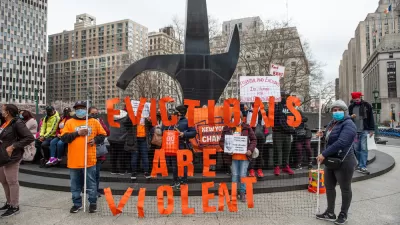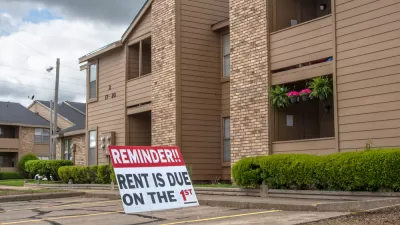A research brief published recently by the Urban Institute provides insight into debt accruing among renters during the pandemic and what governments need to do to relieve the pressure.

Recent analysis published by the Urban Institute says direct cash payment included in the $900 billion economic stimulus package approved by Congress in December 2020 will come up well short in relieving the economic stress facing renters during the pandemic.
Using data from the Bureau of the Census Household Pulse Survey, the Bureau of Labor Statistics' Consumer Expenditure Survey, credit bureau Equifax, and other sources, report authors Jim Parrott and Mark M. Zandi expect that as of the January rent payment, and prior to the distribution of renter assistance funds from the Emergency Relief Act of 2020, there will be over 10 million delinquent renters in the United States.
The typical delinquent renter will be almost four months and $5,600 behind on their monthly rent and utilities, with another $50 per month of late-payment penalties. All told, this comes to about $57 billion in total owed by those behind on their monthly payments.
The stimulus checks will only provide partial relief from this collective debt, according to Parrott and Zandi's calculations:
The package passed will help some 3.5 million renters pay back rent and utilities by the time February rent payments are due. While meaningful, this still leaves us with 6.8 million delinquent renters owing $34 billion, a significant amount of financial stress that is sure to increase as the pandemic continues to rage and the economy continues to struggle. The result will be a three-fold increase in evictions over typical levels.
To fill that huge gap, the report recommends the $30 billion for renter assistance and $5 billion to help relieve the strain of homelessness included in the Biden administration's proposed $1.9 trillion relief package as "exactly what is needed to give this vulnerable population a bridge to the other side of the economic crisis…"
The report also puts some of the responsibility for the effectiveness of that relief package on local and state policymakers. "Many states- particularly larger ones- already have a well-developed infrastructure for distributing relief like this, so should be able to manage the effort quickly and effectively. Others will have to develop much of their infrastructure from scratch," according to the report.
FULL STORY: Averting an Eviction Crisis

Alabama: Trump Terminates Settlements for Black Communities Harmed By Raw Sewage
Trump deemed the landmark civil rights agreement “illegal DEI and environmental justice policy.”

Planetizen Federal Action Tracker
A weekly monitor of how Trump’s orders and actions are impacting planners and planning in America.

Why Should We Subsidize Public Transportation?
Many public transit agencies face financial stress due to rising costs, declining fare revenue, and declining subsidies. Transit advocates must provide a strong business case for increasing public transit funding.

Understanding Road Diets
An explainer from Momentum highlights the advantages of reducing vehicle lanes in favor of more bike, transit, and pedestrian infrastructure.

New California Law Regulates Warehouse Pollution
A new law tightens building and emissions regulations for large distribution warehouses to mitigate air pollution and traffic in surrounding communities.

Phoenix Announces Opening Date for Light Rail Extension
The South Central extension will connect South Phoenix to downtown and other major hubs starting on June 7.
Urban Design for Planners 1: Software Tools
This six-course series explores essential urban design concepts using open source software and equips planners with the tools they need to participate fully in the urban design process.
Planning for Universal Design
Learn the tools for implementing Universal Design in planning regulations.
Caltrans
Smith Gee Studio
Institute for Housing and Urban Development Studies (IHS)
City of Grandview
Harvard GSD Executive Education
Toledo-Lucas County Plan Commissions
Salt Lake City
NYU Wagner Graduate School of Public Service





























